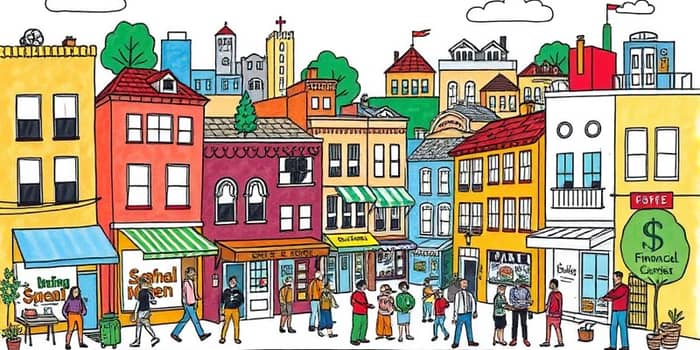
Community Development Financial Institutions (CDFIs) play a pivotal role in empowering underserved communities with capital, services, and guidance. This comprehensive guide explores their mission, structures, and impact across the U.S.
Community Development Financial Institutions are financial institutions providing credit to economically marginalized areas. They emerged to address gaps left by mainstream banks, focusing on underserved markets and populations bound by limited access to loans and services.
Originating from grassroots efforts in the 1980s, CDFIs have evolved into a certified network of institutions, united by a common goal: fostering economic inclusion. They contribute to small-business growth, affordable housing, and community facilities, effectively becoming pillars of sustainable development.
In the United States, certification is administered by the Community Development Financial Institutions Fund (CDFI Fund), part of the U.S. Department of the Treasury. The primary mission of community development is central to eligibility, ensuring institutions prioritize local revitalization over profit alone.
Key certification criteria include:
The CDFI Fund was established under the Riegle Community Development and Regulatory Improvement Act of 1994. In 2008, the Housing and Economic Recovery Act allowed certified CDFIs to access Federal Home Loan Banks, enhancing liquidity and lending capacity.
CDFIs encompass four primary types, each tailored to specific community needs and regulatory environments. Their structures range from for-profit banks to nonprofit loan funds, unified by community representation and impact-driven governance.
The sector has experienced remarkable expansion. Between 2018 and 2023, the number of certified CDFIs grew by 40%, reaching approximately 1,500 entities nationwide. Over the same period, assets tripled to exceed $450 billion in total.
Geographic concentration remains highest in California and the Mississippi Delta, but certified CDFIs operate in urban, rural, and tribal regions across all 50 states. Impact metrics include:
CDFIs harness a “multiplier effect,” recycling repaid loans back into local economies and amplifying community wealth over time.
CDFIs leverage a blend of public and private funding to fulfill their mission. This mixed-capital approach ensures resilience and fosters partnerships across sectors.
By incentivizing private investment alongside federal programs, CDFIs can scale operations, innovate products, and respond swiftly to emerging community needs.
Established to strengthen community finance, the CDFI Fund provides grants, training, and awards across multiple programs. It also manages the Community Investment Impact System (CIIS), aggregating data from awardees for rigorous analysis.
The Fund publishes annual reports and research briefs, covering topics such as capital access for minority entrepreneurs, technological innovations in underwriting, and strategies to enhance financial sustainability. This data-driven approach informs policymakers and practitioners, guiding future investments and regulatory adjustments.
Real-world examples showcase the transformative power of CDFIs. Consider these illustrative cases:
These success stories highlight how tailored products, local expertise, and ongoing advisory services lead to measurable community advancement.
Despite progress, CDFIs face obstacles in scaling impact and demonstrating measurable outcomes. Critical issues include:
Innovations such as employer-based small-dollar loans and state-level credit enhancement programs are helping to overcome these challenges, expanding reach and efficiency.
Policy decisions at all levels influence CDFI operations and growth. Federal statutes determine eligibility for the Federal Home Loan Bank system, while state legislatures craft supplemental programs to catalyze local investment.
Periodic congressional reviews and appropriations shape the CDFI Fund’s budget and programmatic priorities. Meanwhile, municipalities may establish their own revolving loan funds or set aside procurement preferences to support CDFI-financed businesses.
Looking ahead, the sector aims to:
Unmet needs include affordable commercial spaces in gentrifying neighborhoods, improved data systems for impact measurement, and enhanced policymaker engagement to sustain funding levels.
By combining robust research, strategic partnerships, and community accountability, CDFIs will continue to drive economic inclusion and social equity for generations to come.
References













